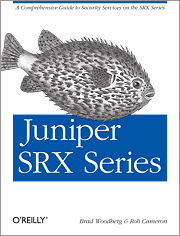Can’t believe it has already been two months since I last posted on my blog… The last two weeks of October I had to go into full-on study mode for the JN0-332 exam so I had to pause on the write-ups for a while. Fortunately the hard work paid off and after a good six months of study and labbing, with a hot summer in between, I sat the JN0-332 on the 26th of October and passed it with 83 percent.
The exam itself was very fair and covered all the topics on the blueprint and in the freely available Juniper Study Guides. I have sat a few “other vendor” exams where multiple questions caught me off-guard and were definitely not included in the related cert guides. Not really the case with this Juniper exam though, so hats off to Juniper for delivering a consistent test.
Another great thing is that Juniper lets you go back through the questions when you’re done. You can also mark questions, which you’re uncertain about, for review. When you’re done, and if you still have some time on the counter, you can run through it once more to fill in the gaps. Or perhaps one of the later questions made you rethink your answer on an earlier question. I’m certain this approach will earn test-takers some points.
The Score Report is pretty straight-forward. It breaks the exam down into the main topics, the total number of questions, number of correct answers and your total percentage. My worst scores were on Firewall User Authentication, which to be fair only had a couple of questions, and UTM, which I couldn’t fully simulate in my SRX100 and vSRX lab. Fair to say I wasn’t surprised with the outcome, but still very satisfied overall.
For anyone interested in the JNCIS-SEC certification, here is what I used to pass the exam…
JNCIS-SEC Study Guides
Probably the most important source of information for this exam, Juniper is offering free Study Guides for all Specialist tracks on their site. You will need an account but registration is free so there really is no excuse. Follow this link
The first PDF covers SRX basics, Security Zones, Policies, User Authentication, NAT, IPsec and Clustering. The second PDF is dedicated to the UTM features.
Juniper SRX Series – By Brad Woodberg, Rob Cameron

I bought this book early on, when I first encountered the SRX at a new job. Weighing in at about 1000 pages, it’s the perfect reference for anyone dealing with the SRX on a daily basis. It’s not something you’ll read front to back though, and I’ve found myself reading through the chapters for whatever feature I need at a certain point. For example, the chapter on Screens gives you an in-depth review of each of the features, the attacks for which they were written, and so on. Highly recommended! I’ve also found that you can read the book online
Juniper vSRX – Firefly
The virtual edition of the SRX firewall. You can run a trial version on your Hypervisor and even try the Advanced Features for 60 days. More information here.
Three SRX100Bs
I bought three of these boxes for cheap on eBay. They don’t have the high memory so don’t support UTM or IPS, but they are great for configurations that are hard to do on the virtual appliance, like aggregated interfaces and clustering. Added bonus is that they also support routing and switching so they can be used for the ENT track also.
Junos Genius app
The official Juniper app for JNCIA and Specialist level exams. Whenever I had a few minutes off I would go through some practice questions. Very good to keep your mind on the content and memorise some of the technical details. I just wish they had a PC edition! 🙂
JUNOS GENIUS – Android version
JUNOS GENIUS – IOS version
Next challenge?
For a few weeks I was working on the Brocade Certified vRouter Engineer certification. I already touched some Vyatta/VyOS routers so figured I might as well try the free exam. Unfortunately, when I tried to book the exam, I found that the Brocade voucher had expired. I tried mailing Brocade but to no avail – they confirmed that the promotion was no longer running. That sort of halted the BCVRE endeavour…
For a good two weeks now I’ve been going through the JNCIS-ENT study guides. Bought myself a couple EX switches which will be complementing the SRX and vSRX I already have in the lab. It should also be a good refresh of the routing & switching topics as my CCNP is up for renewal in December 2016. As I did for JNCIS-SEC, I will be writing up my ENT labs on the blog.
If you are interested in the JNCIS-SEC certification, and have any other questions, feel free to post them in the comments section. Thank you for reading!